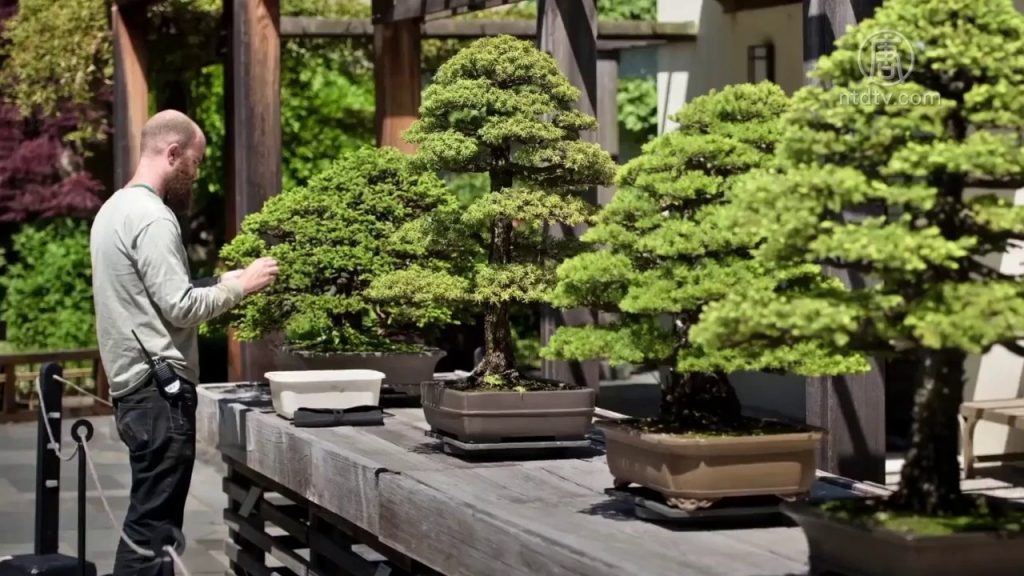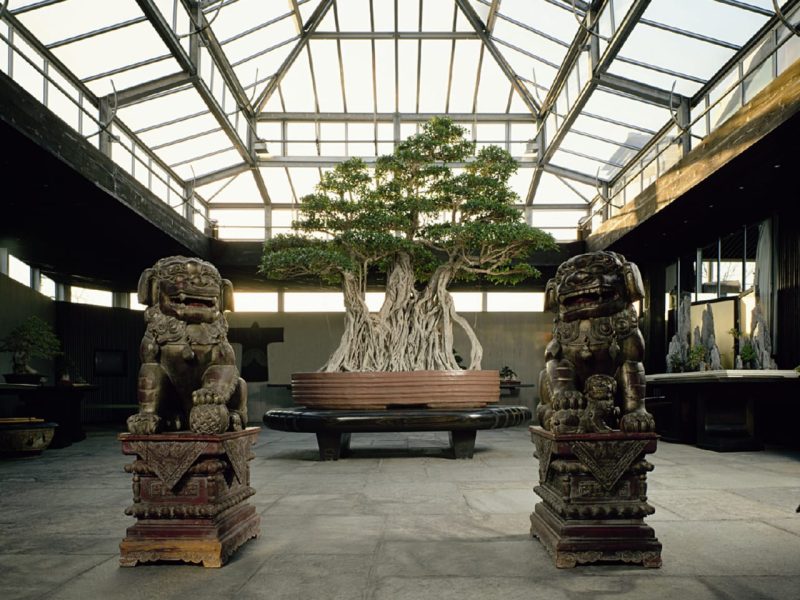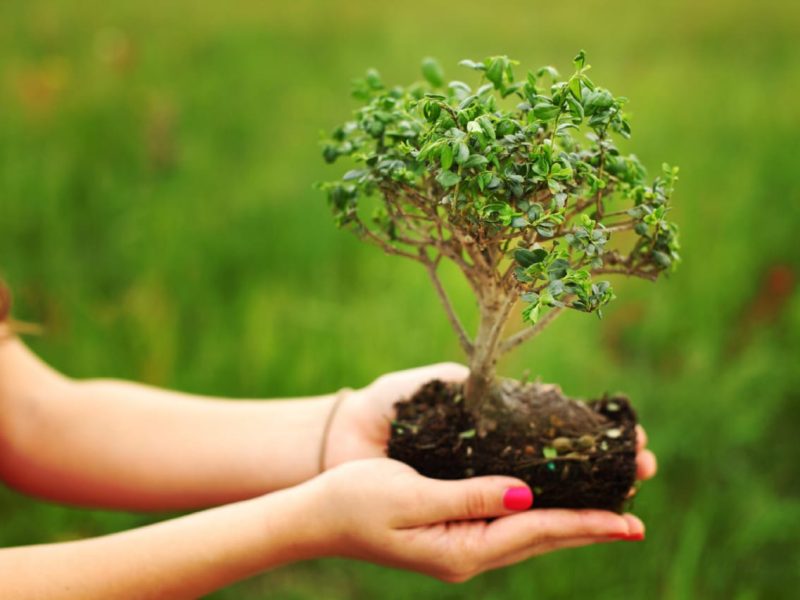Growing bonsai at home is a challenge for the patient: some varieties require up to ten years of care before you can appreciate the results. But it’s the perfect eco-leisure activity for the ever-busy metropolis dweller and an inspiring example of how small steps can lead to big results.
Taking care of bonsai at home – is it even realistic?
To begin with, let’s understand what a bonsai is (contrary to the stereotype, not at all a specific plant from the East). To put it categorically, a bonsai is an ordinary tree that is not allowed to grow normally: it is pruned, the crown is formed, the branches are given a direction.
Of course you can buy ready-made potted bonsai in a store. But Buddhists say that a person who grows bonsai is equal to God, because the world is a garden of Buddha. Isn’t that a reason to try it?
Many familiar varieties are suitable for creating bonsai, and the best results are achieved by buxus, myrtus, abutilon, leptospermum, acacia, wisteria and ficus . You can experiment with broadleaf trees: fagus, carpinus,acer, betula, ulmus, fagus japonica and pomegranate tree. Or grow bonsai from conifers: abies, cupressus, picea, cedrus and pinus.

How to grow bonsai from seeds?
First of all – to find suitable planting material in a store or nursery (or even in the nearest park). Bonsai from seeds is the longest way: first you have to give life to an ordinary tree, and then turn it into an art object. To grow a bonsai from seed you have to take care of it for at least 12-15 years.
How to properly plant seeds at home? Spruce, pine, beech, quercus, euonymus and fir are ready for sowing at the moment of collection (in our case – immediately after purchase). But crataegus, juniperus, maple, hornbeam, cydonia oblonga require rest before planting: they must be placed in wet sand and kept in a cool place (sometimes up to half a year).
From there, the complicated game of bonsai care begins. So, before planting, the seeds are placed in water for a day. Bonsai from seeds can also germinate in sphagnum moss or vermiculite, if you are a confident gardener. Now you need to sterilize the soil, and then treat the seeds with fungicide – to protect against diseases. Plant the tree you want to grow, it is better to plant in a peat cup, where peat and sand are mixed in equal proportions. Then lay a centimeter of sifted soil, slightly press down the soil, lay out the seeds, again cover with sand and lightly water.
The young plant needs to arrange a mini greenhouse: cover the seedlings with polyethylene, put them in a cool place and make sure that the soil is always a little moist. Notice the sprouts? Congratulations, the first stage is passed. Now to grow bonsai from seeds, you need to give the sprouts fresh air. For example, make a few holes in the foil. When the tree has the first leaves – the foil is removed completely. And when the tree reaches 10 centimeters, it is transplanted into a regular pot and gradually accustomed to the light.
To grow bonsai at home, it is important to study the peculiarities of the variety with which you decide to deal. First of all – everything about the soil: transplanting should be in the material, as much as possible accustomed to the tree in nature. Sometimes the soil is experimented with in order to grow from seeds bonsai with certain characteristics. For example, if you transplant a pine to a “poorer” soil compared to normal soil, the needles of the tree will become smaller.
Young shoots for bonsai: care at home
You can grow a bonsai tree from a young shoot – this method is more convenient for the beginner. They are sold in the nursery – plants about 15 cm in height are suitable for us. Choosing a young tree, pay attention to the crown: it is better if the plant has many branches to the ground. Then you will be able to choose which branches to cut and leave. The second important factor is the root system: it must be well developed and without visible damage, so that the plant will root well.
To grow the tree, it is first rooted in a deep container and only a couple of years later transferred to a characteristic ceramic pot – then begin to form a bonsai.
The lower part of the trunk and part of the root system should be left on the surface. To slow the growth of the tree – this is an important part of bonsai care – the roots are pruned. Ideally, as many horizontal roots as possible should be left. At a small height from the ground, the bonsai is pulled over with wire – to make the trunk thicker. Sometimes notches are left on the surface of the tree: the sap of the plant, healing the wounds, leaves interesting swells on the trunk. Once the tree reaches the desired thickness, you can move on to treating the crown.
Tip: The earlier you start shaping the bonsai, the more spectacular the mature tree will be. For some plants, this is especially critical – for example, for upright elms. To grow a tree properly, you will already have to cut out some of the roots in the first year and trim the trunk regularly.
Advanced level: grow bonsai from cuttings
Bonsai from cuttings at home – a choice for skilled gardeners. The pros of the solution: the tree or seeds do not need to buy in the store, but can be taken even on the street; in addition, you will win a year compared to seedlings. To grow bonsai from cuttings, elm, ligustrum, carpinus betulus, acer campestre, berberis and ulmus minor will do. But it is not possible to propagate cedars and pines this way.
So, you cut off a branch and stick it in the ground for rooting, and then close a mini greenhouse and monitor the moisture of the soil. Deciduous cuttings root quickly – literally in a couple of weeks. With conifers, the process sometimes takes six months. Fresh young leaves are a sign that the cuttings have put down roots. After a few months it can be transplanted into a pot and begin to prepare it for its role as a bonsai.
Tip: conifers are better to cuttings in early September or April, deciduous – in June. Sometimes cuttings are treated with a phytohormone – it stimulates root growth.
How to form bonsai at home?
At first glance, caring for bonsai and shaping the trunk of a tree is like learning a magic practice from scratch. How do you make a bonsai tree grow in the right direction and achieve a certain size? The main technique that shapes a bonsai is regular pruning of the branches. It is important that the plants do not bloom at this time. Young branches are cut at the level of one or two rosettes from the trunk. Soon young leaves – smaller in size – will appear on the tree.
The second important tool that helps grow a bonsai tree is aluminum wire. Iron is not suitable: it is not flexible enough and rusts quickly. The wire should be about three times thinner than the bonsai branch. It is wrapped around the branches to give the desired direction of growth.
When first shaping, wire is used on all branches, even the thinnest and smallest ones. Make sure that the branches do not cross over. To avoid damaging the delicate bark on the tree, pieces of leather can be placed under the wire. Remove the wire after about three months (do not unwind it; cut it off). It is important to ensure that it does not grow into the bonsai. This is especially critical when taking care of trees with smooth bark: ugly marks from ingrown wire will be visible on the trunk even after a decade. Trees with rough bark tolerate these peculiarities of care better: scars on junipers and pines regrow much faster.
A beautiful technique for a mature tree whose trunk is already difficult to regulate with wire is to pull the branches down. For this purpose, wire structures with weighting are used.
Care and watering: subtleties of skill
The main thing to know – bonsai are not watered from above. It is best to get a tray with high sides, fill it with expanded clay and water generously – and only then put a pot with bonsai on top. The tree will take in water as needed, and you will refill it regularly. An alternative way to care for and water it is to dip the pot in a basin of water for a few seconds to allow the soil to soak in the moisture.
Small but expensive
How big can a home-grown bonsai reach? Depends on the characteristics of the original tree, but in general – from 8 to 130 cm. The ideal size you can get from the leaves: If you have aCastanea or a Pinus nigra the tree has to be relatively big. But with small-leaved plants you can create dwarf forms. The most successful miniature bonsai will turn out of juniper, amelanchier, rhododendron or spruce.
By the way, historically the height of bonsai was about half a meter – the fact is that the trees were grown to decorate niches in houses. The shoots “grew” thanks to tea ceremonies: the Japanese aesthetes came up with the idea of combining tea drinking with another pleasure – admiring bonsai.



